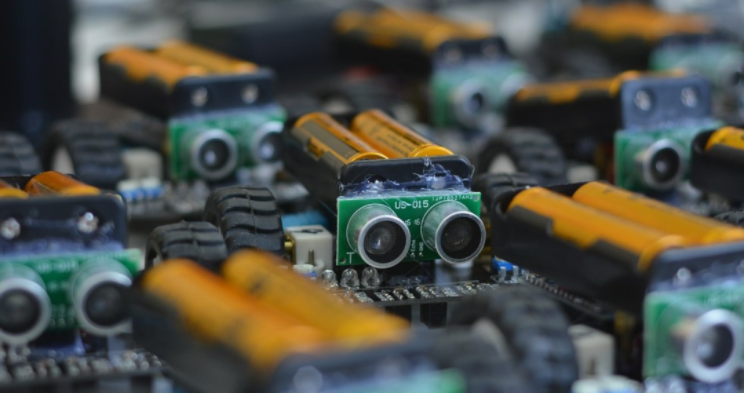RPA – Proof of Concept (POC) or Proof of Value (POV)? Who cares, just get going! Part 4 of 5
Delivery model: How will the organisation gain the necessary skills to setup, configure and grow the organisations RPA | IA | DA | AI program? Will it be completed by a systems integrator (SI)? A mixture of internal or external resources? A risk based partnership model or vendor outcome based risk model? Will development resources be offshore, inshore or a hybrid model? Has your organisation experience of implementing or running this model?
“With Automation being a way of work, versus a project in the long term, it’s worth investing the right delivery model for you as an organisation. If you successfully run existing change programmes with your eyes closed, taking a small amount of help from an expert could be what you need, versus an end to end managed service, where you pretty much outsource everything to a 3rd party to do it for you. Regardless of what you want to achieve, and how you want to do it, there is a delivery model for you.”
Wayne Butterfield, Automation Expert
Try different tools: Whilst many of the large vendors offerings are converging, the platforms are very different and require different skills. UiPath is different to Automation Anywhere; which is different to Microsoft Flow; which is different to Selenium which is different to Kryon Systems and so on. Each organisation should purchase the platform or platforms best suited to their particular needs and not blindly pick one of the so called top three vendors.
- What to look for in a (Blue Prism) code review by Hewitt Trinh RPA | Business Intelligence | Machine Learning)
- 40 essential selection criteria to choose an RPA platform
“ISG research already shows that 1/3rd of organisations are making use of at least 2 tools. The splitting out of user cases across the RPA spectrum further highlights that not everything you automate needs an Unattended sized pick axe. Sometimes it needs an Assisted sledgehammer, or a drill sized attended Bot to be the perfect fit. One tool doesn’t do all of these elements well, so experimenting with different tools is necessary”
Wayne Butterfield, Automation Expert
Test if the organisation is compatible with the vendor of your choice: Different organisations have different cultures and that includes consultants, system integrator and vendors. A POV | POC is a super opportunity to test promises against automation capabilities; product knowledge and development capabilities and so on. Do your team and their team work well together?
- Development Experience – a unique approach to evaluate RPA vendors by Hewitt Trinh RPA | Business Intelligence | Machine Learning)
“Organisations need to find a compatible partner and integrate them wholly and completely into their organisation. I have witnessed too many companies holding their consulting partners at arms light, treating them like a necessary evil at best or out right hostility at worst. Don’t blame a vendor for your organisations lack of strategy, broken processes, siloed nature or fractured organisational culture.”
Kieran Gilmurray, Global Automation Lead
IT skills, funding gaps or appetite: RPA | IA | DA | IA programs are often started within business units. IT are sometimes only consulted once a program runs into issues or when it is ready to scale. Too many times RPA | IA | DA | IA programs fail to scale as IT have not been consulted in regards to setup, code standards, compliance and so on. Sometimes IT feel ignored or threatened by IT that is outside of their control and passively aggressively stop a program in its tracks. Does the organisation have the necessary knowhow to get value out of the technology opportunity on offer or does it need to hire the right talent?
“Engage IT in any RPA | IA | DA | IA program. Make sure IT genuinely support the program otherwise it won’t scale and will fail.”
Pavani Koudri, RPA & AI Architect
Author Advice: RPA 101: Make sure IT are bought into the process and signed up to support the program in word and deed.
Cloud: Many organisations are moving towards virtual machines or cloud. RPA | IA | DA | IA tools needs to be evaluated for VM and cloud setup and support. Technical readiness | cloud requirements | infrastructure setup | cloud security standards are all very different to on premise infrastructure setups. Organisations can rapidly implement cloud solutions themselves or engage a third party RPA | IA | DA | IA cloud vendors SASS offering.
“Application access from cloud servers – plus rewrite security procedures for Bots; amend active directory to provide a ‘bot’ profile e.g. don’t auto reboot or patch; avoid messages before login; etc.”
Pavani Koudri, RPA & AI Architect
Platform and Environment Configuration: It is important to understand and configure the environment to provide the right accesses for your RPA | IA | DA | IA platform. This will allow you to move forward at pace when you move from POC | POV to live environment.
“Environmental challenges are the single biggest cause of frustration in RPA. It only takes one difference in one system or in one virtual machine and a process could run into difficulties. Don’t under estimate the need to provide this area the right attention and due diligence. An extra hour spent here upfront, could save days worth of investigating later.”
Wayne Butterfield, Automation Expert
Practice monitoring, infrastructure upgrade and maintenance: Who will build the reports that will be needed to run the platform in the live environment? There are a vast number of data analytic reports that can be built and produced to ensure an organisations RPA | IA | DA | IA program delivers optimally at all times.
Security: How is the security model to be managed for a RPA | IA | DA | IA program? Teams need to engage InfoSec | Risk | BCP teams from the very start of a program. These teams need to be engaged to understand the risks, opportunities and differences that are involved with RPA | IA | DA | IA compared to other IT programs.
“It is imperative to proactively partner with Risk and security teams across the digital transformation journey, instead of being wary of the topic or thinking workarounds. POCs often introduce the use of IoT, cloud, Beta tech, new methods/modes of multi-geography digital connectivity etc. increasing the exposure to security threats.
Engaging the relevant risk/security team, sharing the full picture upfront and finding joint solutions is the prudent thing to do. This not only protects the firm from threats, but also helps identify future design parameters early on in the journey”
Nitesh Rungta, Head – Digital Solutions, Automation and Projects
Code standards: What are the most relevant design and code deliverables? What are the right documentation standards to adopt? Who is responsible for review and approval of the functional and technical deliverables? What’s the approach to best practices around documentation, version control, peer reviews, testing, release and configuration management, security, auditing, etc. to scale RPA | IA | DA | IA?
“When it comes to RPA, documentation of implementations, best practices, and company standards are invaluable. Putting proper procedures in place for your developers will make for an effective RPA program and greatly increase the chance of success. Best practices and standards will keep your team from reinventing the wheel and help create consistencies in the way the RPA team implements automated systems. Creating documentation for how to use and modify implementations of RPA as well as their associated system, will help new team members become productive earlier and remove the risk of losing expertise when an employee transfers to another department/leaves the company.”
William Roseberry, Owner of RoseberryPi LLC
How might RPA bots move from production to live: Which team will migrate the approved version of the bot into production? Is some non invasive testing in live environment allowed? Might only IT or Infosec transfer bots to live (as this may slow agile methods)?
Does your organisation run POC | POVs before implementing new technology, and if yes, then what are your organisation’s best practice advice?
#intelligentautomation #bots #rpaworks #digitaltransformation #roboticprocessautomation #rpa #cognitiveautomation #digitaldisruption #digitalworkforce #processautomation #digitalfuture #digitalstrategy
Other articles: If you like this article then you may find these eight articles of use too.
- How to build a business case for Intelligent Automation and Robotic Process Automation
- 30 ways to build a pipeline of processes suitable for Robotic Process Automation (RPA) and Intelligent Automation (IA)
- I’ve now met 150+ RPA developers but these are the 20 signs of a ‘truly exceptional’ RPA developer!
- 8 questions to ask to ensure you select the ‘right’ processes to automate using RPA | IA.
- 14 rules for Robotic Process Automation (RPA) and Intelligent Automation (AI) success
- The A-Z of Robotic Process Automation, Intelligent Automation and Digital Transformation
- The biggest lie told to RPA customers – 50 robots equals success
- 40 essential selection criteria to choose an RPA platform
If this could benefit someone else tag them and share this.
Free to reuse: We are a community of RPA and Intelligent Automation experts with years of real world experience. We have stories to tell and the scars to show for it. We share our collective wisdom for free to simply provide as much value as we can to you. Therefore, if you want to post this article on your LinkedIn page then please feel free to do so. The more information we share within the RPA community the more likely businesses are to succeed with this excellent technology.
Further Help: If I can help you in any way please do reach out.
Note: The views expressed above are our views and not those of my employer or the employers of the contributing experts.









Leave a Reply